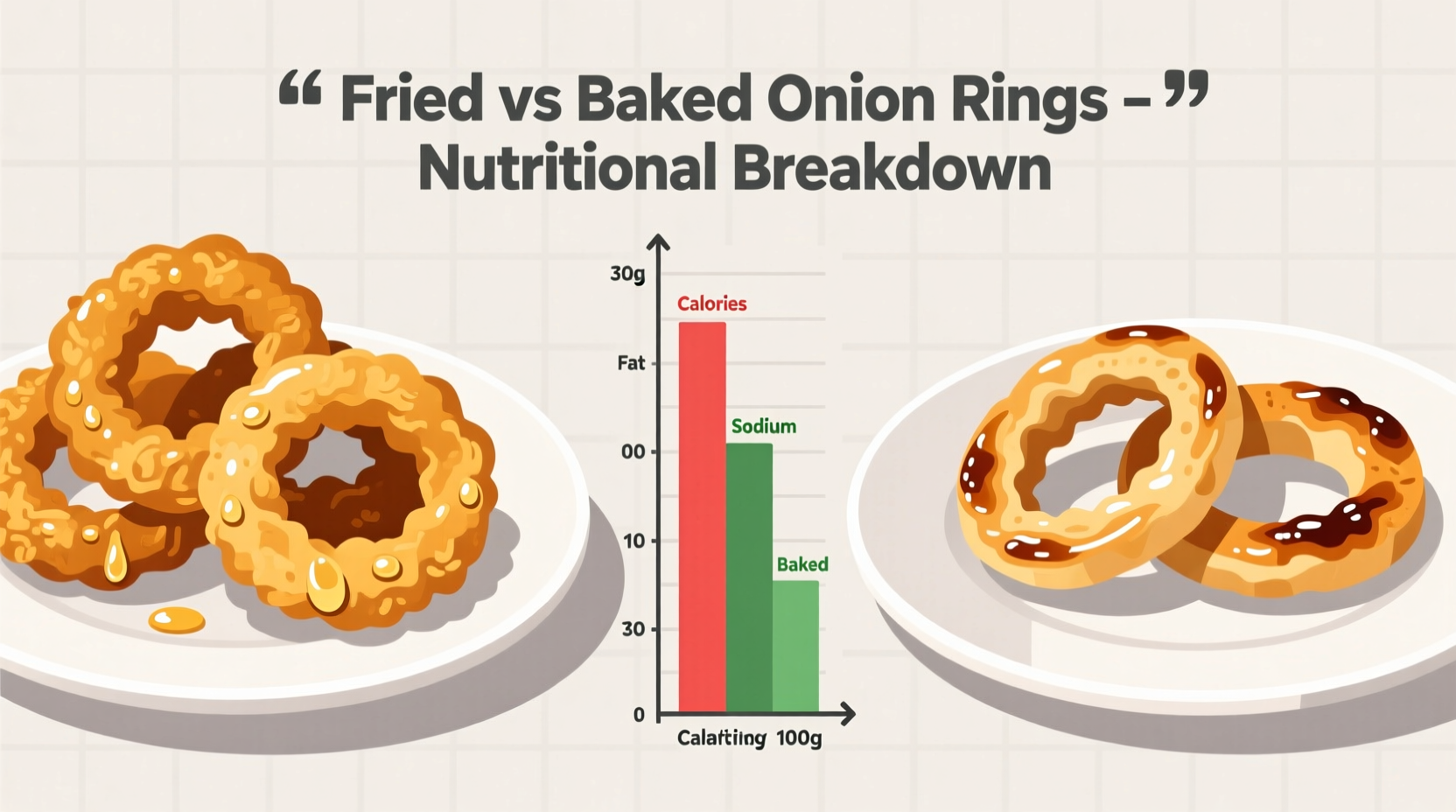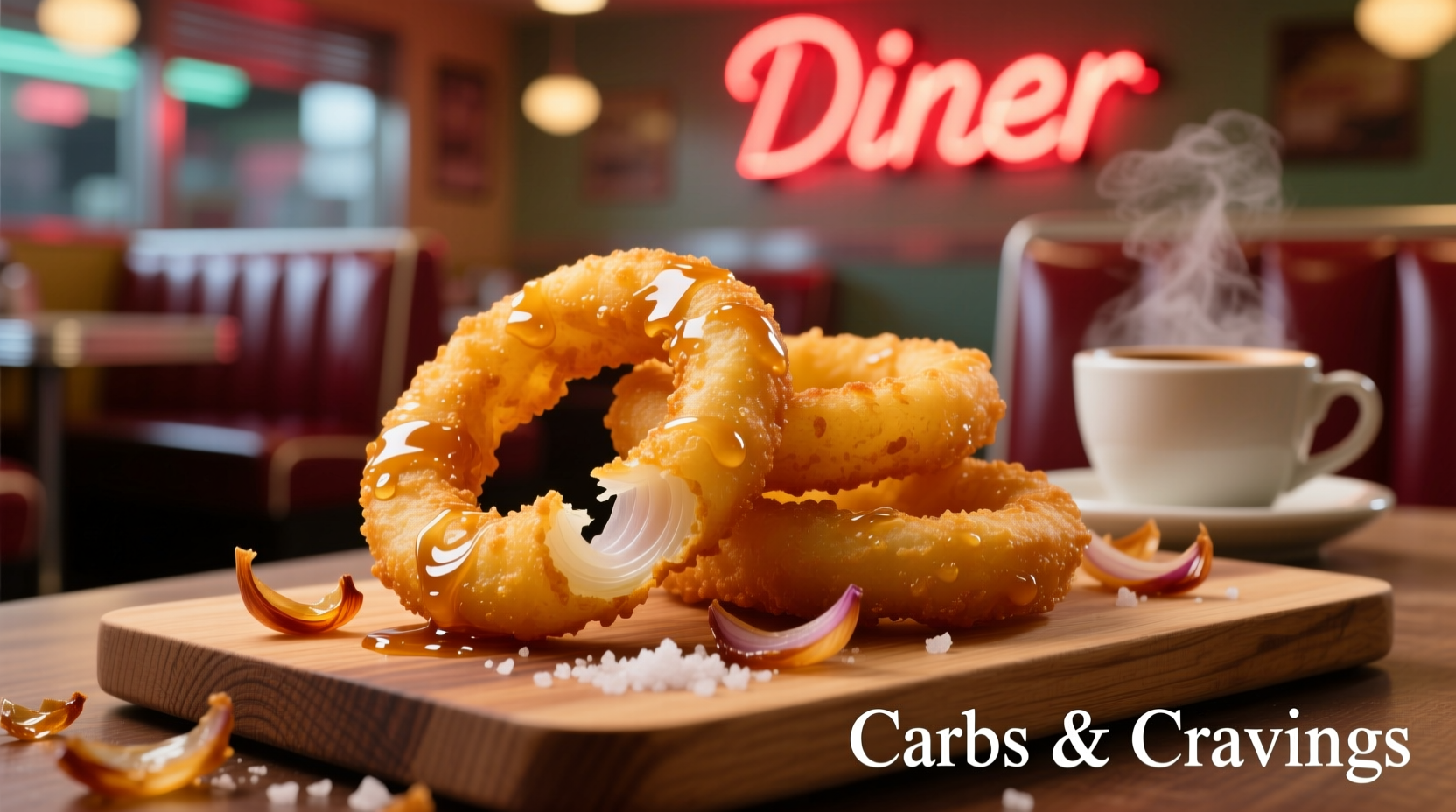Understanding Carbohydrate Content in Onion Rings
When you're tracking your daily carb intake for health, dietary, or medical reasons, knowing the exact carbohydrate content of popular foods like onion rings is essential. Unlike many vegetables that are naturally low in carbs, onion rings undergo a transformation during preparation that significantly increases their carbohydrate profile.
Where Do the Carbs in Onion Rings Come From?
Onion rings contain carbohydrates from two primary sources:
- The onion itself - A medium raw onion contains about 9 grams of carbs, primarily from natural sugars
- The batter or breading - This is where most additional carbs come from, as standard recipes use flour, cornmeal, or other starches
When onions are sliced into rings, battered, and fried, the carbohydrate content multiplies substantially. The frying process causes the batter to absorb oil, but more importantly, the starches in the batter significantly increase the total carb count per serving.
| Preparation Method | Carb Content (per 3oz serving) | Calories | Fiber Content |
|---|---|---|---|
| Traditional deep-fried | 35-40g | 350-400 | 2-3g |
| Lightly battered fried | 28-32g | 300-350 | 2g |
| Baked with minimal coating | 25-30g | 200-250 | 3g |
| Raw onion slices | 9g | 40-50 | 1.5g |
This comparison, based on data from the USDA FoodData Central, shows how preparation methods dramatically affect the nutritional profile of what starts as a relatively low-carb vegetable.
How Onion Ring Carbs Fit Into Different Dietary Plans
Understanding how onion rings fit into various eating patterns helps you make informed choices:
Keto Diet Considerations
For those following a strict ketogenic diet (typically limited to 20-50g of carbs daily), a single serving of traditional onion rings would exceed or nearly exceed the entire daily carb allowance. Even the baked version would consume a significant portion of the daily limit.
Diabetes Management
People managing diabetes need to be particularly mindful of carb counts. A standard serving of onion rings contains approximately the same carbohydrates as two slices of bread. The American Diabetes Association recommends consistent carb counting, and onion rings represent a high-carb food that can significantly impact blood sugar levels.
General Healthy Eating
For individuals following standard dietary guidelines, the USDA recommends that carbohydrates make up 45-65% of total daily calories. For a 2,000-calorie diet, this translates to 225-325 grams of carbs daily. While onion rings can fit within this framework, they should be considered an occasional treat rather than a regular component of a balanced diet due to their high calorie density and relatively low nutrient profile compared to whole vegetables.

Practical Strategies for Managing Carb Intake with Onion Rings
If you enjoy onion rings but need to monitor your carbohydrate consumption, consider these evidence-based approaches:
Portion Control Techniques
Ordering a side instead of a full serving can reduce carb intake by 50-75%. Many restaurants serve oversized portions that contain 2-3 times the standard serving size. Requesting a smaller portion helps maintain enjoyment while managing carb intake.
Smart Preparation Modifications
When making onion rings at home, try these lower-carb alternatives:
- Use almond flour or coconut flour instead of traditional wheat flour
- Apply a light egg wash with minimal coating rather than thick batter
- Bake instead of frying to reduce oil absorption and slightly lower carb density
- Add fiber-rich ingredients like ground flaxseed to the coating to improve the nutritional profile
Pairing for Balanced Nutrition
When enjoying onion rings, balance your meal with protein and non-starchy vegetables. This approach helps slow carbohydrate absorption and creates a more nutritionally complete meal. For example, pair a small portion of onion rings with grilled chicken and a side salad rather than consuming them as a standalone snack.
Common Questions About Onion Rings and Carbohydrates
Understanding the nuances of onion ring nutrition helps address frequent concerns from health-conscious consumers:
Are onion rings worse for carb counting than French fries?
Generally, traditional onion rings contain slightly more carbohydrates per serving than French fries of comparable size. A standard serving of French fries (3 ounces) typically contains 30-35g of carbs, while onion rings contain 35-40g. However, this varies by preparation method and specific restaurant.
Do different onion varieties affect the carb count?
All common onion varieties (yellow, white, red, sweet) have similar carbohydrate content. A medium raw onion of any type contains approximately 9g of carbs. The preparation method has a far greater impact on final carb content than the onion variety itself.
How do restaurant-prepared onion rings compare to frozen varieties?
Restaurant-prepared onion rings often contain more carbohydrates than frozen supermarket varieties due to thicker batters and larger portion sizes. A typical restaurant serving may contain 40-50g of carbs, while a standard frozen package serving (about 3 ounces) usually contains 30-35g. Always check nutrition information when available, as there's significant variation between establishments.











 浙公网安备
33010002000092号
浙公网安备
33010002000092号 浙B2-20120091-4
浙B2-20120091-4